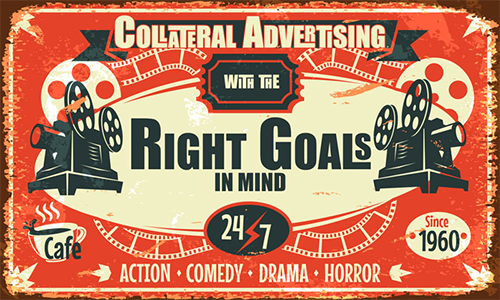No matter what type of collateral advertising campaign you’re planning, you have to create a message that has the right goals. Your potential customers aren’t necessarily at the same stage of the buying process. You need to take care in identifying who you’re targeting with a particular advertising strategy and craft the message in a way that speaks to them.
In general, the three stages of the “buyer’s journey” are:
- Awareness – Recognizing there’s a problem and wanting to learn more about it. For instance, the customer might realize the he or she’s disorganized and wants to do something about it.
- Consideration – Learning more about the possible solutions. To continue the above example, the customer would now be comparing different organizational techniques.
- Decision – Making the final decision and purchase. The customer who wants to get organized has decided that a paper planner is the right method for him or her and is deciding on the right one.
Collateral Advertising in Stages
Use these stages to plan your advertising efforts.
How to Build Awareness
In this stage, customers are really looking for general information about their problems. Blog posts and advertorials in magazines are a good way to give the person the info they need while occasionally mentioning your brand as a solution.
A home builder, for instance, might give information that’s about living in the area or whether a person should build a new home or purchase a resale home. When you provide a lot of information, you start to be seen as a leader in the industry.
The information should seem unbiased even though you’re eventually leading a customer to your company.
Helping Potential Customers Consider Your Brand
Customers in this stage are comparing their options, and they need to know more about how your company could benefit them.
Let’s say you own a small accounting business and you want to get more customers at tax season. You might send a brochure out to people in your area that compares using tax software, going with a chain company like H&R Block, or using a certified accountant. The brochure you create would obviously highlight the benefits of a personal accountant, but it should present the other options as well.
Motivating Potential Customers to Purchase
Once customers know that they want a product or service like the one you offer, you want them to choose your business. Reviews or testimonials give a potential customer more confidence in your company, so encourage current customers to give you feedback that you can publish.
Special discounts and money-back guarantees are both good ways to get buyers to pull the trigger. If you’ve done a good job in providing information at the other stages, customers might naturally lean towards your company simply because they’ve learned to trust you.
There can be a lot that goes into a full advertising campaign. A professional ad agency can really help you take your business to the next level.
If you’re interested in learning more on your own, Kissmetrics offers a great roundup of articles discussing the science and psychology of advertising. As long as you keep the basic principles in mind, though, you should see success.

